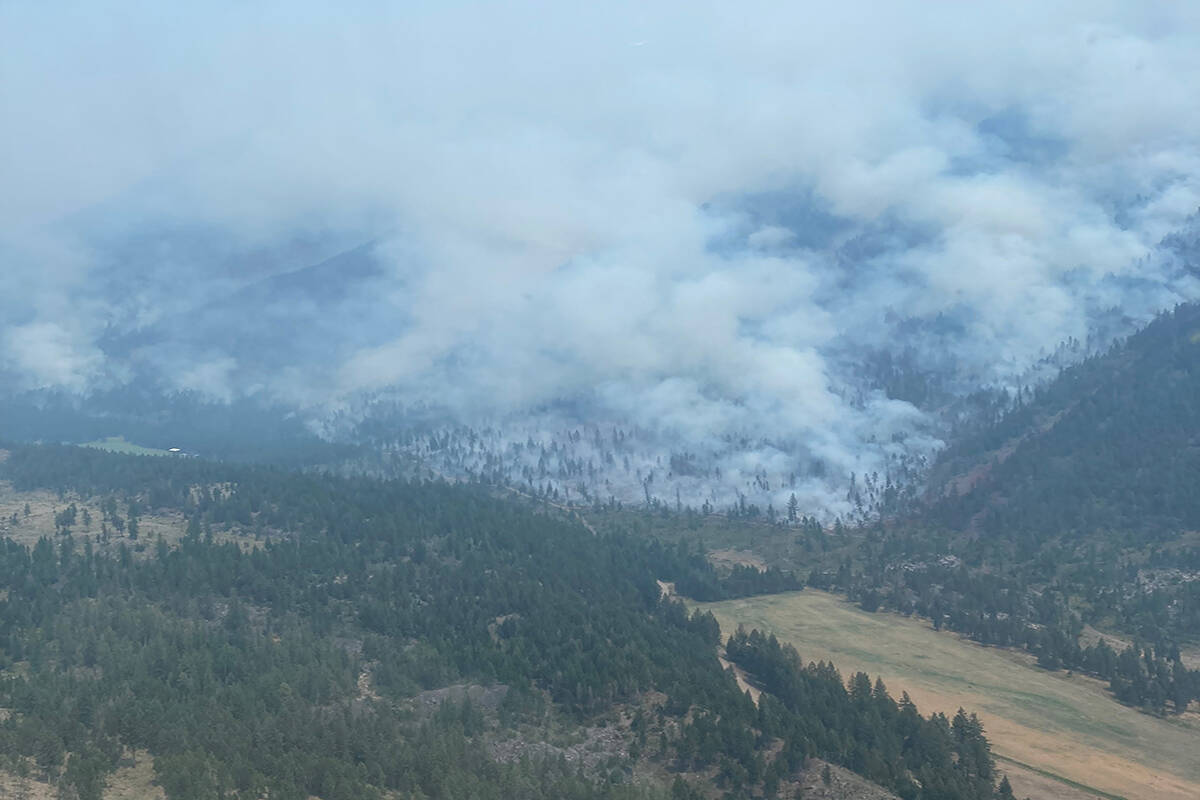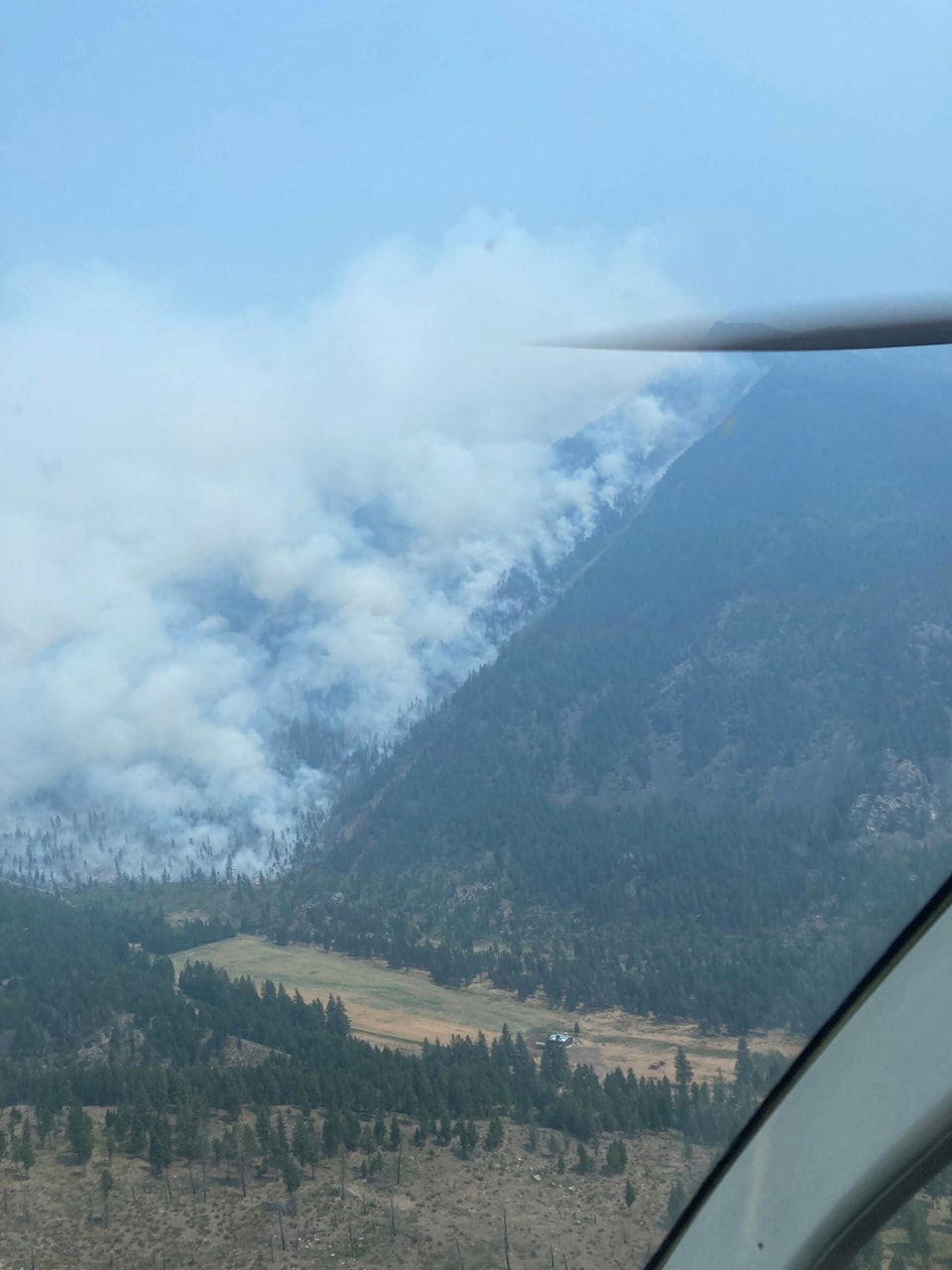The Bill Nye Mountain fire near Wasa continues to be listed on the BC Wildfire Dashboard as being held at 2,990 hectares.
Cooler, wetter weather provided relief for fire crews in mid-August, and the fire is not expected to grow any further. That said, the fire may have had further reach if not for previous mitigation efforts.
Randy Harris is a registered professional forester who is now retired after 38 years with the BC Forest Service. During the last eight years of his career, he was the ecosystem restoration leader for the Rocky Mountain District in Cranbrook.
Harris explained that the final control of Bill Nye was made easier by the fact that the wildfire mitigation team tied the south boundary of the fire to an existing ecosystem restoration (ER) unit near Lakit Lake, on July 22nd.
He adds that after speaking with fire crews, the ecosystem restoration burn served as a good anchor point for their back burn.
“This tie in, through a prescribed burn, linked a fuel reduced area with good fire guards to the wildfire and reduced the risk that the fire could have run off the mountain and into the housing around Campbell Meyer road,” Harris explained. “While the ER burn did not truly reduce fire suppression, it saved a lot of time to have a ready constructed fire guard to burn from. Also, if the guard was breached in the ER project [area], fire control would be very simple in grass fuel type.”
He adds that crews plan to tour the area after the burn season is over, to see what further information they can gain.
In terms of the mitigation work that was done for the Lakit Lake burn, Harris explained that there were several different efforts and projects over the course of some years.
“The Lakit Lake logical burn unit (LBU) was treated in three stages and totalled 400 hectares,” Harris said. “24 hectares were harvested by Tembec (now Cafor) in 2004. 53.6 hectares [of forest fuel] was spaced and pile burnt in 2008, and six small units were funded by the Government Forest Investment account. The whole 400 hectare unit (with some 63 hectares of untreated Wildlife Tree units) was prescribed burnt in 2009.”
Harris says that the Rocky Mountain Forest District staff oversaw the prescription spacing and prescribed burn operations, while actual on-ground work was completed by local contractors.
Marc Trudeau is a coordinator with the Rocky Mountain Trench Natural Resources Society, which was involved in the Lakit Lake LBU.
He explained that the society is a nine-member organization that was established in 1996 to tackle to problem of declining grasslands and open forest ecosystems in the Rocky Mountain Trench. Their ecosystem restoration projects also help to reduce forest fire fuels and protect areas against wildfires.
The Rocky Mountain Trench Natural Resources Society coalition consists of the following organizations: Cranbrook Community Forest Society, East Kootenay Invasive Species Council, East Kootenay Wildlife Association, Kootenay Livestock Association, Rocky Mountain Naturalists, Southern Guides & Outfitters, Waldo Stockbreeders Association, Wildsight and the Windermere District Farmers Institute.
“Grasslands and open forests are major contributors to our region’s exceptional biodiversity. They provide grazing for elk, bighorn sheep, white-tailed deer, and domestic livestock,” Trudeau explained. “These ecosystems also provide habitat for many wildlife species, including the majority of the region’s rare and endangered species such as Lewis’s woodpecker, American badger and long-billed curlew.”
Trudeau said that using an existing ER treatment area as a defendable boundary would make sense, because of the reduction in available fuel to burn and/or to provide a logical tie in point for a burn off.
“Grasslands and open forests contribute to a healthy environment in other ways too,” he said. “They offset the effects of greenhouse gases by removing carbon dioxide from the atmosphere. They preserve and enrich soil by preventing erosion and adding nutrients. They discourage the spread of insects that attack and kill trees, and they form natural firebreaks that can help stop the advancement of catastrophic wildfire. Many also value grasslands and open forests for their recreational, aesthetic and spiritual values.”
Trudeau adds that the total funds raised by the Trench Society to prepare the Lakit Face for prescribed burn was approximately $107,583.
The main funders included the Fish and Wildlife Compensation Program at $71,000, Provincial Land Base Investment Funds of $21,583, Columbia Basin Trust $10,000 and Wild Sheep Society of BC at $5,000. Prescribed burn planning and ignitions are conducted by the BC Wildfire Service.
As stated in the Rocky Mountain Trench Ecosystem Restoration Program’s five year plan for 2019 to 2023, prepared in 2018, the plan is a continuation of the longstanding ecological restoration process that has been active since 1997.
“Regardless of the program, almost all projects proposed involve spacing by mechanical thinning and/or prescribed burning, with the primary objective of converting dense forests to a more open canopy,” says the report, prepared by Harris. “This thinning is necessitated by the interruption of the historic fire regime of the local forests and grasslands by more effective fire suppression that has occurred since the Second World War.”
He explains that most forests in the district have been affected, to some extent, by ingrowth. Ingrowth increases fuel loads that feed wildfires. It also creates denser canopies that shade out the grass and shrub forage that wildlife and cattle depend on.
The goal of the program is to restore the designated 109,400 hectares of the Trench and support the native and historical condition matrix of trees, plants and animals - while create sustainable forage for wild and domestic grazing animals.
corey.bullock@cranbrooktownsman.com
Like us on Facebook and follow us on Twitter
Want to support local journalism during the pandemic? Make a donation here.

